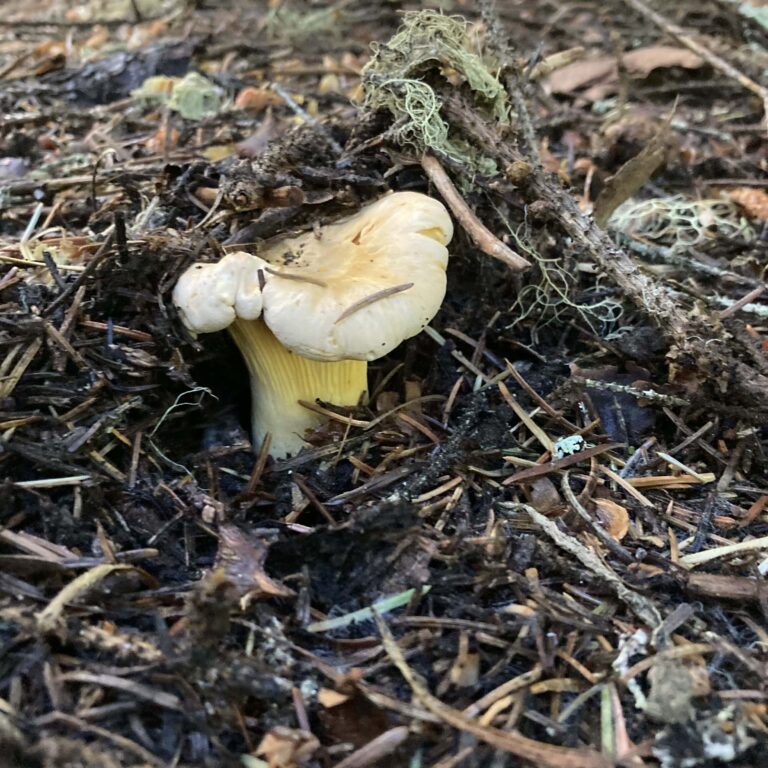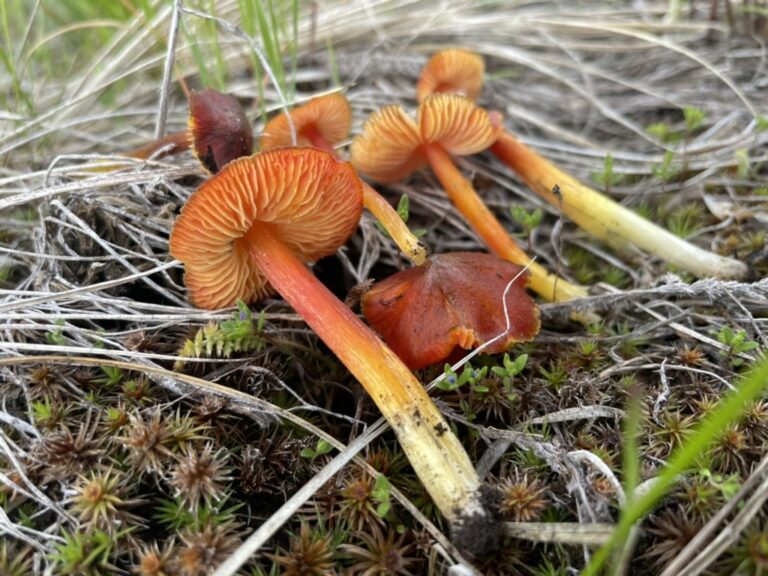Our Northern Rocky Mountain Region contains thousands of unique Fungal species, many of which we haven’t officially discovered! However, some of our favorite well known Fungi are undeniably keystone species, and maintaining healthy populations is just as important as maintaining the health of our more known threatened Flora and Fauna species. Macroflora and Fauna, such as the Grizzly Bear or the White Bark Pine are known throughout Montana as threatened species. Unfortunately, none of our Fungi are even considered.
Here’s 20 fungal species of special concern, and why they’re important. All of these are endemic to Region 1. These species are largely mycorrhizal and all are dependent upon the healthy mixed coniferous forests of the northern Rockies. They all sequester carbon, nitrogen, and water in their life processes, and are a primary source of amino acids for the rest of the ecosystem.
- Russula brevipes, a keystone species in forest ecosystems around the Pacific northwest and the Rocky mountains, boasts more interconnecting relationships than any other, being not only a mycorrhizal associate of most conifers, but also several species of heterotrophs, including plant species of special concern, and hosts the ascomycete species Hypomyces lactifluum, which is the commercially traded lobster mushroom.
- Hericium abetinus, the conifer-loving species of lions mane or bears head mushroom, is rare to infrequent throughout our regions. It’s European counterpart was redlisted and collection of wild hericium in England for example is punishable by jail time. Related species are being cultivated commercially after discovery of medicinal neurogenic compounds produced by these fungi.
- Geopyxis carbonicola group, a key element in every northern boreal ecosystem, the fire cup forms mycorrhizae with virtually every plant in every conifer forest. In Alaska, I saw that the limits of the forest exactly corresponded to the boundaries of the presence of Geopyxis, which fruits after a forest fire.
- Rhizopogon spp. are hypogeous (underground) truffles related to Suillus spp. that form subsurface fruiting bodies which are energy and protein rich, drought-resistant, and mycorrhizal with Lodgepole Pine, Juniper, Douglas Fir, and Ponderosa Pine. These are a key protein source for elk, squirrels, and gestating deer, Trappe et.al. reported deer scat collections during august were found to contain primarily undigested rhizopogon spores.
- Lactarius deliciosa group are mycorrhizal with conifers and deciduous shrubs, and while they are food for invertebrates, these highly nutritious mushrooms are often ignored by forest mammals here. In Europe, the corresponding species, which I have sampled, is much sought after for its vitamin A and C rich mushrooms. Recent studies show that agroforestry plantations of oak and related Lactarius indigo produce more protein more efficiently than conventional farming.
- Cantharellus spp. aka chanterelles are a group of highly prized commercially valuable mushrooms that are mycorrhizal with Fir and Spuce and cannot be cultivated. Rich in proteins and vitamins, they are indigestible raw, and largely ignored by wildlife. Their presence indicates primarily undisturbed habitat, and is a good indicator of forest health. The mycelium are easily killed by soil compaction from heavy equipment.
- Morchella sp are a native highly prized commercial species. So called fire morels appear after a forest fire and annually attract pickers from around the continent. Individual fires have yielded morel harvests valued in the millions of dollars, much of which are sold to European and Asian markets.
- Suillus spp are a keystone species complex and primary source of amino acids in our ecosystems. These mycorrhizal species are key to the survival of all pine seedlings, and form myriad relationships with other plants, fungi, and heterotrophs. Suillus mushrooms are the ubiquitous spongy slippery jacks, and are eaten by humans, ursine and ungulate mammals, and invertebrates.
- Cortinarius caperata, aka Rozites, one of many members of this little studied family of mycorrhizal fungi, has shown antiviral properties. (Spatafora, et. al.) one of few Cortinarius eaten by people, but wildlife consume a wide variety and enormous volume of these mushrooms.
- Ramaria, the coral mushroom group, mycorrhizal with Fir and Pine, spring food for elk, a key protein source for wildlife in the spring. Ramaria needs full canopy and BCR (brown cuboidal rot) rich forest soils. Hyphae are easily damaged by compaction. Some spp eaten by humans.
- Hygrophorus spp, the waxy caps, are an important source of food for wildlife. they form mycorrhizae with all conifers, as well as deciduous shrubs, and even grasses. These high energy mushrooms are important for bears emerging from hibernation and overwintering deer and elk.
- Fomitopsis pinicola, the red belt conk, is essential for soil building in our region as it creates brown cuboidal rot, which is the primary vehicle for water retention in our western forests. A traditional medicine, the conks can also be felted into a leathery material for hats and handicrafts. Previously dismissed as common, it’s infrequency mirrors a decline in forest health.
- Fomitopsis officinalis, aka agarikon, aka quinine conk, has been highly valued for its medicinal value since the days of the second world war, when the government purchased conks from locals who used .22 caliber rifles to shoot them off the sides of trees for use as anti malarial drugs. Paul Stamets recently published evidence of its efficacy against several viruses, from smallpox to influenza. It is rare and endemic to mature Doug fir, larch, and fir.
- Boletus edulis group are mycorrhizal with conifers in our area and reliably produce volumes of delicious edible mushrooms. Their presence is also an indicator of a healthy forest, and often associated with Spruce and Fir trees.
- Amanita muscaria group often found in association with B. edulis, these toxic and medicinal mushrooms have a long history in many cultures. An integral part of the ecosystem, they form mycorrhizae with conifers and are food for mammals, birds, and invertebrates.
- Tricholoma murrilli, aka matsutake, aka pine mushroom, enjoys enormous popularity in Asia, where it is widely considered a delicacy. Price surges in the past made matsutake hunting a lucrative lifestyle, now somewhat diminished by alternative sources. Still a commercially important mushroom and export, mycorrhizal with pine and fir in harsh environments. Tricholoma murrilli is also an important food source for deer and elk.
- Sparassis radicata aka cauliflower mushroom, a highly prized edible, indicative of old growth habitat. It is easily destroyed habitat disturbances, and has become increasingly rare in the Lolo National Forest.
- Pycnoporus sp. local to the Lolo National Forest have demonstrated superior lignase activity, producing a bright, high tensile pulp that matches or exceeds that produced by conventional chemical processes. It is now being used by pulp mills in Argentina. Information about bio pulping can be found at Science Direct. It is also used to break fever in traditional medicine.
- Truffles, including Tuber spp. are critical mycorrhizal partners and a vital component of the diets of small mammals in the Northern Rockies. Rosentreader et. al (blm biologist) reported that 85% the protein needs of flying squirrels were sourced from Fungi. Some species are of commercial interest. Truffle populations are known to be impacted, and the species mix changed, by silvicultural practices. The removal of the host tree, high soil temperatures, and soil compaction will heavily impact production of truffles
Our organization has recorded more than 40 species of hypogeous (underground) fungi during Western Montana Mycological Association events and forays since 1992


